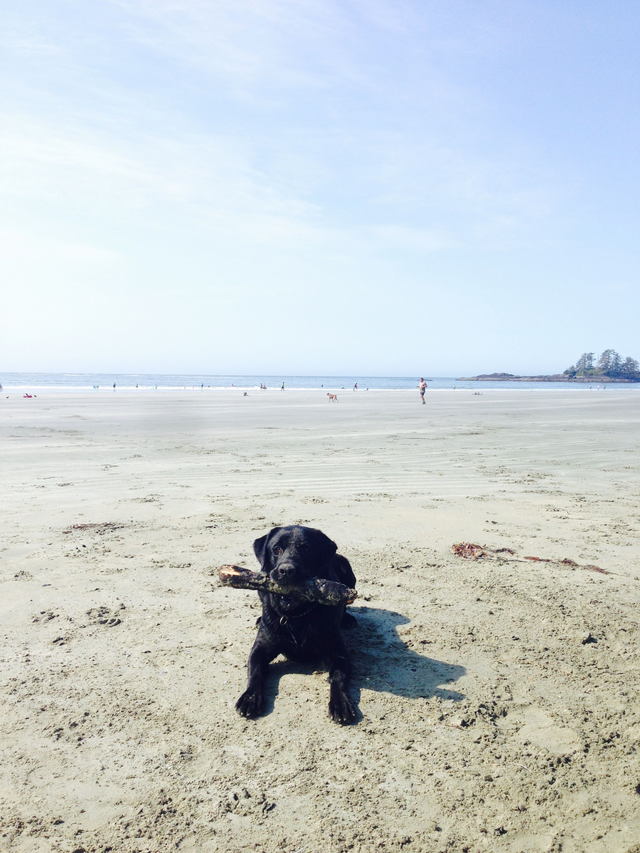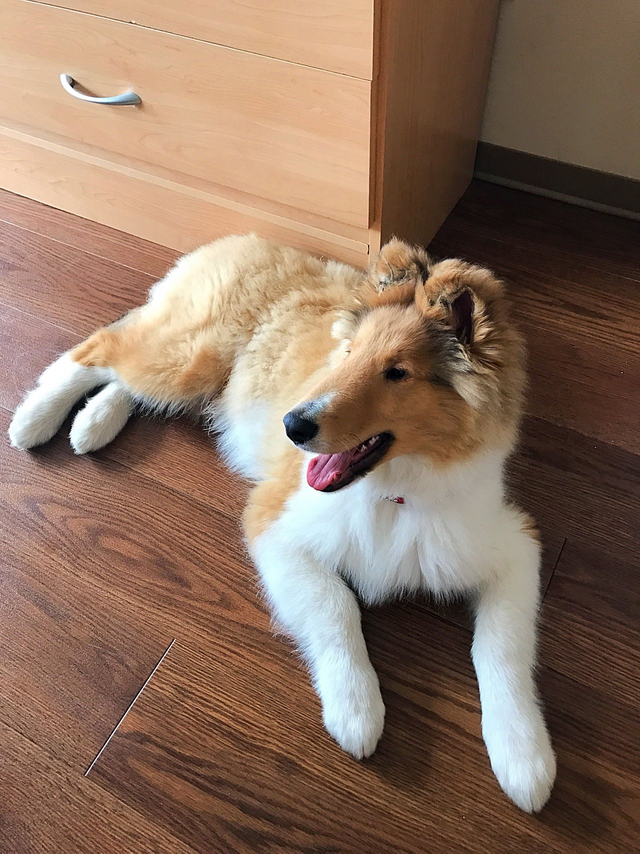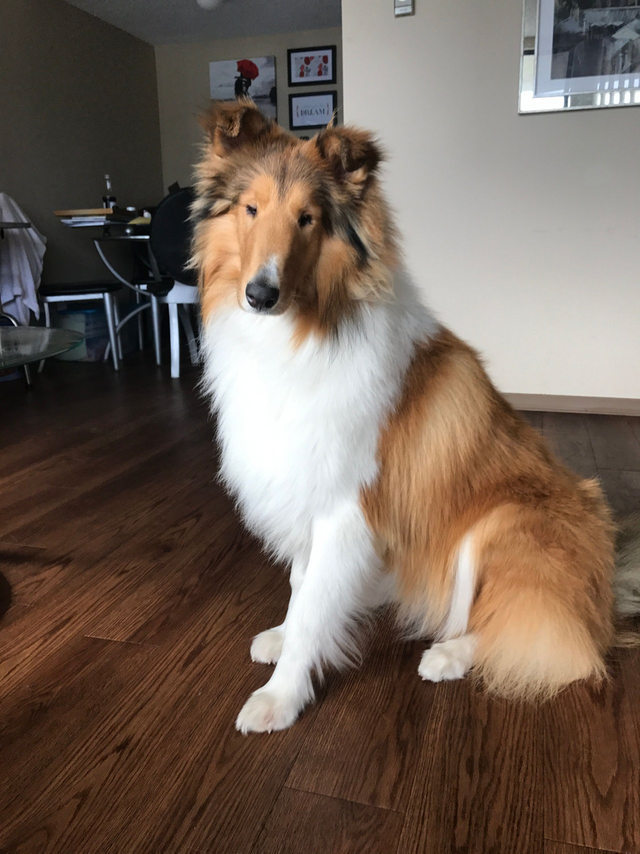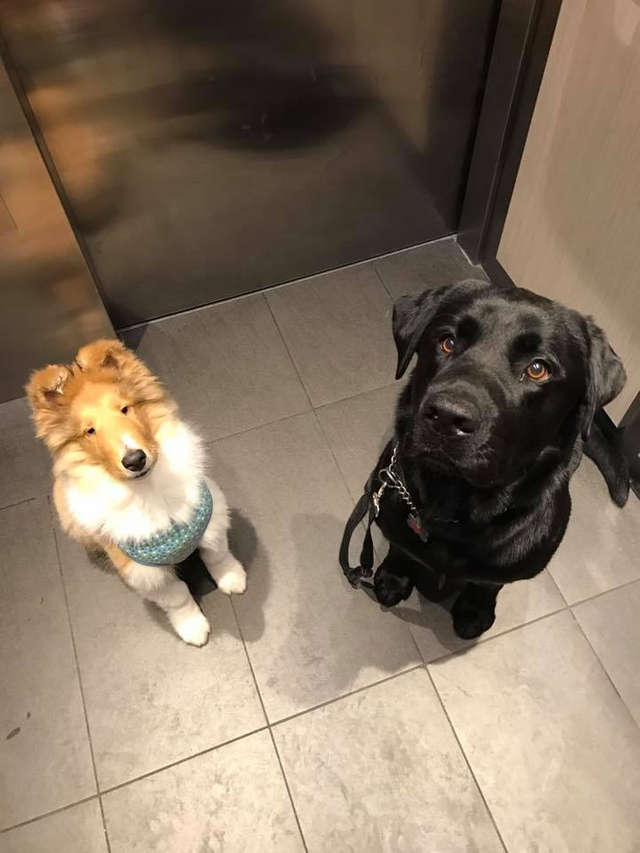Many of you looking at your screens at this very moment has a pooch sitting nearby. Maybe a small little furbaby is nudging at your arm, trying to get your attention. But you shoo your furry friend away because you’re too busy reading my post…
Kidding.
No, really though.
For those of us who own animals, we can understand the love that is passed from person to animal and vise versa. Do we treat them like a member of the family? Most of the time. Would we do anything for the wellbeing of our pet? Many of us would yell, “Of Course!” Because pets make us feel awesome. And loved. And that love is so amazing because it is unconditional.
Not a chef? Not a problem. Our animals will eat anything we give them and they don’t really care if we’re not a five-star culinary artist. Nope. They love us because of who we are. Pets wait at the door when they know you’re coming home. They dance for you with radiating excitement when they see you! They are always excited to see you.
No matter what.
Even if you’ve been so busy that you haven’t had the time to give your pet the attention he deserves. He’s madly in love with you. He doesn’t care if you have a zit, got fired, or dumped. He doesn’t care if you made a really bad fashion choice that day. You are his one and only love. Forever.

Doesn’t an animal that loves you SO much deserve to be properly taken care of? Yes! And I hope everyone reading my post can at least agree on that! It is my goal to share with you the health benefits of feeding raw, and discuss all the false statements around the “benefits of kibble.” I do NOT wish to turn this into an argument between others who have different beliefs, I just wish to share some information to you open-minded people, and relay the message that perhaps the commercial foods have falsely persuaded you to believe that kibble is nutritious for animals.
I would like to start out by saying that I am NOT a veterinarian, nor do I have a degree in canine nutrition. However, I do have a belief that can be backed up by solid, accurate evidence. I am not pulling this out of thin air… Not to mention, I have first-hand experience with feeding raw. (I feed both my dogs raw… but I will get into that later)

Myth #1: MILLIONS OF DOGS ARE SAFETLY EATING ‘COMPLETE AND BALANCED’ COMMERICAL FOODS EACH DAY WITH NO SIGN OF HEALTH PROBLEMS.
Woah. This is a hefty statement. And I hear this a lot. In my opinion, this statement is more of an observation, and one that is so false on so many levels. One can easily point to these millions of dogs and say that kibble is not all that bad. So it is fair to imply that raw diets are not necessary because dogs can eat commercial foods and still be healthy… But let us think about this statement, and its associated issues. Is kibble really safe? Is it healthy for our beloved pets?
Millions of dogs eat kibble. (Cats too, but for argument’s sake, let’s stick to dogs.) And millions of dogs- at least 85% of all dogs- suffer from periodontal disease by age 3 as a result of eating these processed foods. In translation, this refers to teeth covered in plaque and glistening with bacteria. All of this bacteria get into the gums of a dog and provoke the body’s inflammatory response continually for the rest of the dog’s life. Thus, dogs (and cats!) are doomed to have nasty teeth and rancid breath. I have heard many people complain about their dog’s bad breath, and call it “normal”. It makes me laugh sometimes. How can that be normal?
But as greater awareness of periodontal disease and its effects on the heart, lungs, kidneys, liver, joints, skin, and other systems of the animal grew known, so did the industry for ‘alleviating’ the problem. Now shelves are stocked in dental chews and plaque-scrubbing “bones” that people can buy for their pets. Vets hand out toothbrushes, toothpaste, and dental washes instructing them to brush their carnivore’s teeth regularly and to schedule frequent dental cleanings for the pet. Cha-Ching! This can cost hundreds of dollars. Why not treat the problem at its source and feed the correct food for your pet’s diet?
Myth #2: DRY FOOD (KIBBLE) CLEANS TEETH WHEN CONSUMED.
This is a very common statement, even among some veterinarians, but it is most definitely not true. Dogs and cats have very pointy teeth. Even their molars are sharp edged, not flat. These teeth are designed to bite, tear, shred, and ripe through raw meat. So when a dog or cat eats kibble, they either swallow it whole or shatter it. Kibble does not scrape down onto the lower parts of the teeth, or near the gums, which is where all dental problems begin. In fact, kibble can contribute to dental problems when the shattered bits lodge between the teeth, promoting bacterial growth. Just like with a human diet, carbohydrate food debris breaks down into sugar, which dental bacteria feed upon. Currently I have three cavities in my back molars… Perhaps if I avoided the commercially advertised food, (like Oreos…. Don’t judge…) the dental bill wouldn’t rack itself up. Kibble for animals is like McDonalds for every meal. There it is, I’ve said it!
Does that seem fair to be giving a beloved family member, who trusts you to take care of them, McDonalds…aka…Kibble?!
Myth #3: ALL RAW MEAT DIETS ARE NOT BALANCED.
This IS true, but so it should be. Let me explain.
You cannot feed a diet of just meat to your dog and expect it to thrive. Your dog needs bones, and organ meat as well to obtain the proper nutrients. This means feeding a prey-model diet based on a whole prey animal. Remember that your dog has no need for vegetables, and that most of the nutrients in vegetables, even pre-processed ones, are unavailable to your dog. (Your dog’s stomach cannot break it down… I will talk about this next.) The alternative? Feed according to the prey model and provide variety. It sounds difficult, but it is not. Just think “variety” and you’ve got it. If you are feeding whole animals or a variety of raw meaty bones and organ meats, then your diet will be balanced. Raw foods contain the exact proportions of fat, protein, vitamins, minerals, and enzymes a dog needs.
One other concept of balance that should be addressed is the idea that “Dogs need complete and balanced nutrition in every meal.” This is so far from the truth, and honestly is nothing but propaganda designed to make people buy into commercial dog food. This is not how the canine body- or any other body- operates! Take your own diet, for example. And be honest with yourself… Do you really eat a complete and balanced meal every time eat? No! At least, I sure don’t! You eat a variety of foods over a period of time, in which your body generally does really well, and exhibits no signs of nutritional deficiencies. I’ll give an example, in one week I will eat a variety of fruits, vegetables, carbs, starches, meat, etc… I might not have absolutely everything in one day. Does this make sense? And I feel totally healthy, full of life, and full of energy! In the case of animals, it is the same… Nutritional needs are met over a period of time, and balance is achieved through time as the animal eats what it needs it or whenever it can get it.
Myth #4: BONES ARE DANGEROUS AND HAVE NO NUTRITIONAL VALUE.
Cooked, bones are quite dangerous! Cooking changes the structure of the bone, making it indigestible and easily splinter. Raw bones rarely splinter and are fully digestible, even the collagen proteins that some people claim are "indigestible." It is mostly the byproducts of the digested bone that form the bulk of a raw-fed animal's feces. Dogs and cats do not need the fiber from grains and vegetables, and feeding such foods only results in the big, soft, malodorous stools everyone complains about. Why are the feces of kibble-fed animals so big and soft (Ew, right? Sorry…) because the animal is pooping out what his body doesn’t use! And there happens to be a lot more than the animal doesn’t use when eating kibble… Hence the big, and soft… Okay, that’s it for poop talk.
Let me repeat this for good measure: raw bones are completely digestible and are not dangerous for your animal. They are no more dangerous than kibble, and the only reasons they are made out to be dangerous are A) people misunderstand that raw bones are fully digestible while cooked are not, and B) people want to scare you into thinking you are going to kill your dog if you give them bones, and C) bone-induced problems are blown way out of proportion in an effort to maintain the status quo of feeding kibble.
What these people forget to tell you about are the 60,000 dogs suffering from bloat each year—of which nearly 20,000 die—or the number of dogs dying from choking on kibble—which is a more common occurrence than one hears of! (references are down below… Again, not pulling this out of thin air) They also forget to mention the numbers of dogs that choked on or swallowed tennis balls, rocks, sticks, and a variety of other objects. These incidences FAR outweigh the numbers of dogs that have problems with raw bones. Just take a survey of veterinarians in your area and see what the most common blockage or choking culprits are in their specific practices. Do not forget to ask how many dogs they have treated (successfully and unsuccessfully) for bloat.
If you are concerned about choking or about bones getting stuck or about broken teeth, here are some things you can do:
• Feed appropriately sized pieces. Do not be feeding a dog the size of a Rottweiler head a little chicken neck or wing! Feed that dog a whole chicken. Or a whole turkey neck! My big Lab, I will feed a full turkey neck. He loves it and has no problems eating it. Bigger pieces force the dog to slow down and chew. Also, stay away from cut bones; this includes things like cut up neck bones (where they are cut into individual vertebrae), cut ox-tail bones, and cut knuckle bones. The smaller size encourages inappropriate gulping, not to mention the rather sharp edges left over from the saw blade! Feed large MEATY bones that are in as whole condition as possible. You want your pet to chew, to ripe, to tear. (Remember, good for the teeth too!)
• Feed raw meaty bones frozen or partially frozen. The dog will have to work at it much harder and will be forced to slow down. My lab has a massive head. We call him XL Dog. Because, he is, XL. The turkey necks I feed him are usually always frozen. My collie on the other hand (you know, lassie?) His turkey necks are always thawed because his jaws are much smaller and he would never get through a frozen turkey neck.
• Do not feed the big weight-bearing bones of large herbivores. These are well-known for chipping and cracking teeth! These include the ever popular "recreational bones" like cow femurs and soup bones. They are incredibly dense and hard, and can result in slab fractures and cracked carnassial teeth. Avoid them if you can and stick to MEATY bones that are edible.
• Feed MEATY bones that are surrounded by and wrapped up in plenty of meat. Do not feed bare bones or bones that have hardly any meat on them. Too much bone can lead to constipation, so feeding very bony parts like beef knuckle bones, chicken wings, and even some rib bones can result in some very hard "concrete-like" poops. If you do feed a bony meal like whole neck bones or a slab of beef ribs, supplement with some raw "meaty meat" on the side to compensate for the high bone content.
• If you are still worried, learn the doggie Heimlich maneuver, and monitor your dog while he eats (which should be done anyway, regardless of what the dog is fed!) And always remember: more dogs die from bloat or choking on kibble and sticks, than from choking on raw bones.
Myth #5: THE BACTERIA IN THE RAW FOOD WILL HURT YOUR DOG.
Yes, the bacteria in raw meat might hurt your dog IF the dog already has an immunocompromised system or some underlying problem. Raw diets have also been blamed for causing things like pancreatitis and kidney disease, when in reality the underlying disease was already there and was brought to light by the change in diet. Dogs are surprisingly well-equipped to deal with bacteria. Their saliva has antibacterial properties; it contains lysozyme, an enzyme that lyses and destroys harmful bacteria. Their short digestive tract is designed to push through food and bacteria quickly without giving bacteria time to colonize. The extremely acidic environment in the gut is also a good bacteria colonization deterrent. People often point to the fact that dogs shed salmonella in their feces (even kibble-fed dogs do this) without showing any ill effects as proof that the dog is infected with salmonella. In reality, all this proves is that the dog has effectively passed the salmonella through its system with no problems. But then people say that there is a risk of salmonella being passed along to humans. Yes, the dog can act as a salmonella carrier, but the solution is simple—do not eat dog poop and wash your hands after picking up after your dog. Easy, right? I’d hope so!
Even kibble-fed dogs regularly shed salmonella and other bacteria (Reference linked below). Most of the documented cases of severe bacterial septicemia are from kibble-fed animals or animals suffering from reactions to vaccines. Commercial pet foods have been pulled off shelves more than once because of bacteria AND molds that produce a deadly toxin. The solution? Use common sense. Clean up well and wash your hands. And think about the behaviour of your dog… This is an animal that can lick itself, lick other dogs, eat a variety of disgusting rotting things, and ingest its own feces or those of other animals with no ill effects. My collie sometimes eats cat poo. Don’t ask me why. Is he going to die? Nah. The dog, plain and simple, can handle greater bacterial loads than we can.
Myth #6: THERE IS NO SCIENTIFIC RESEARCH TO BACK UP A RAW-FED DIET.
When people have said this to me, I always return that statement with, "have you ever read credible research that suggests there is solid scientific research to back up a kibble-fed diet? I have searched and searched over the years, but have found no solid evidence of kibble being healthy for dogs and cats Long-term. Long term is the key here... Sure, there is research done for short-term, but this does not give the animal enough time to start showing signs of mal-nutrition, etc... But as for raw diets: there is one million years of evolution as enough evidence. Where did dogs come from? Everyone knows they have descended from the wolf. And over time, people created the different breeds by breeding Dog A to Dog B. The anatomical and physiological structure of the dog is evidence enough. The teeth, the stomach, the digestive tract, suggests that dogs are meant to eat raw. They should be eating raw. Feeding dogs kibble is like feeding meat to a horse. It just shouldn’t happen.
Myth #7: RAW DIETS ARE INCONVIENT AND EXPENSIVE.
Since when does convenience replace the welfare of our pets! Oh, that's right; kibbled foods are very "convenient" but also fill our pets with toxic additives and carbohydrates they do not need, creating numerous health problems and shortening the lifespan and reducing the quality of life for our pets. Yes, we trade "convenience" for the health and welfare of the very animals that depend on us for their care.
A raw diet is as convenient as you make it, but it will always be more work than pouring preformed pellets into a bowl. But your pet's health should be much more important than convenience. If not, then why do you own a pet?
With a prey model diet, there are no veggies, no cottage cheese-yogurt-liver-supplement mixtures. There are whole animals, raw meaty bones, and organs. That's it. Eggs can be included too, but those you just remove from the carton and hand to your dog whole. (Or do like I do, and crack it into their bowl, shell and all. My boys love it.) Defrosting food is optional (unless you have cats). Yes, your dog will spend more time eating its food, and yes, you will have to supervise. Yes, you will have to spend time shopping for, packaging (unless you have a lot of dogs and can feed a whole case of whatever to them), and freezing meat. But this is a small price to pay for the glorious health your dog will enjoy. And as time goes on, both you and your pet will become more efficient—you at shopping, packaging, and freezing, and your pet at ripping, tearing, and chewing.
I have been feeding my two dogs raw for a while now, and I am so fast at knowing where to shop for what.
Raw feeding can also be as expensive as you make it. It can be more expensive than kibble at first until you find a reliable source for meat. Or it could be dirt cheap to begin with. I go to a local butcher shop every weekend and stock up on raw meats for my dog. It is about as expensive as a “good” bag of dog kibble is at Petsmart.
As your dog's protein sources diversify, your cost will also decrease since he can eat a variety of meats. This means you can get whatever is cheapest and on sale. Do not forget about all the money you will save on vet bills and from the artificial chews, toothbrushes and toothpastes for dogs (since you will not need those anymore).
I never brush my dogs’ teeth. And they don’t have smelly breath. Vets actually complement my dog’s teeth all the time. Little do they know it is because I feed raw.
My XL Dog, a 4 year old Labrador named Brooks, used to have VERY bad skin issues. He would scratch and itch ALL the time. If he would go swimming in the ocean, you can bet he would be scratching all the way home. He had terrible dandruff. His fur wasn’t shiny, and he looked downright miserable! Oh, and let’s not talk about all of his ear infections! Not only that, but his anal glands would fill up from having the runs too much, and I would have to take him in to get them squeezed. Disgusting, right? Yeah, he wasn’t too happy about it either. Worst of all, Brooks’ backend would fall out of place if he ran too hard at the park. He was only 1 year old when this was happening. That is WAY too young for a dog to have problems. Especially problems on this scale. It was so bad, that if his backend would fall out of place, I would have to rest with him on the grass for sometimes hours before I could get him to walk back to the car (he was too heavy for me to carry). Sometimes I would get someone to help me carry him to the car. It was embarrassing for me too! People would think I hurt him, or that he was in a bad accident, but really… It was because the expensive, “nutritional” kibble I had been feeding him, was not nutritional at all.
Then I started him on raw. And now, he is like a new dog. He has perfect skin, and a shiny, healthy coat. No more scratching, and no more ear infections. His stools have hardened, so no more vet visits to get his anal glands squeezed! Best part of all, his backend does NOT fall out anymore! He can run as far and as hard as he wants, and still be totally intact. He can finally be the best version of himself.
This is Brooks at 4 years old.


@elenalila
Did YOU know?! Raw Dog Food Information Revealed!
Copied Paste Content is Discouraging in The Community.
Source Content
Here
This is Direct Copied Paste Material.
#clean!
Downvoting a post can decrease pending rewards and make it less visible. Common reasons:
Submit